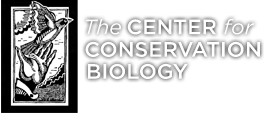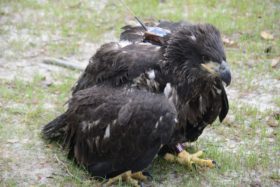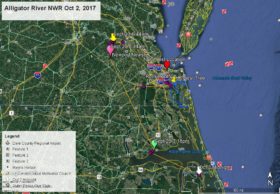Laying First Egg Feb 3, 2011
Azalea Still at South Lake Feb 1
February 2, 2011Camellia Enters Charles City County, VA
February 5, 2011The generation of an egg and the laying of the egg are very energy consuming for the female eagle. The first outward sign that she is about to lay an egg is pulling the soft nest material up around her at 2:34. Then the process of forcing the egg out can take a few minutes to about a half hour or more. As these photos show she began to concentrate (strain) at 2:46 and the egg was in the nest by 2:49 – only 3 minutes.
egg out can take a few minutes to about a half hour or more. As these photos show she began to concentrate (strain) at 2:46 and the egg was in the nest by 2:49 – only 3 minutes.









10 Comments
And so the fun begins….nice work Reese.
Hip hip hooray!!
Here we go again…the beginning of another exciting season with our eagles 🙂
Thank you Reese
Great screen captures of the first egg being laid! the last close-up shot is especially exciting. Thank you, and good luck to all of us this nesting season!
Really excited and happy about the arrival of the first egg. -And those to come! Hope our Norfolk eagles have a super year!
Thanks for giving us such amazing info and the opportunity to know (and love) this eagle family.
I hope we get 2 more…just like last year…all males.
Great job Momma and Poppa,
and Reese… : )
Yippie! Praying for healthy eaglets!
Thanks Reese, CCB & NBG for such awesome photos!
and so it begins….indeed. Yet another sign of impending spring and a small sigh of relief!
thank you Reese for the amazing photos. I still cannot get the web cam up. Very disappointing.
Sue – Have you gone to http://www.wvec.com and clicked on the Eaglecam logo? That should take you right to it.
Thank you so much for providing this study for us. I am thoroughly enjoying it and passing on news about it to friends and to the school with which I am involved.